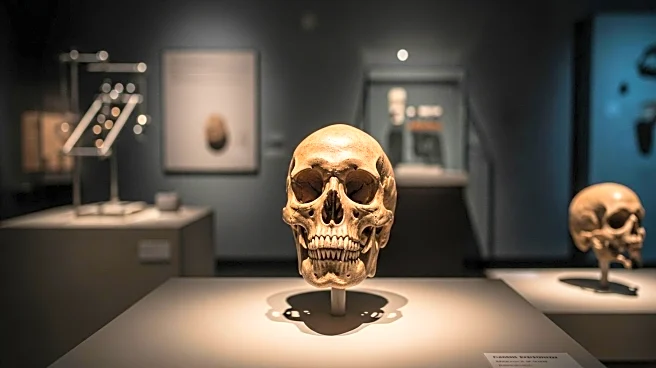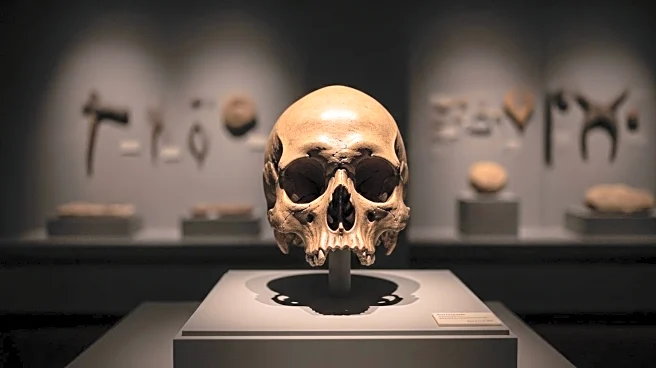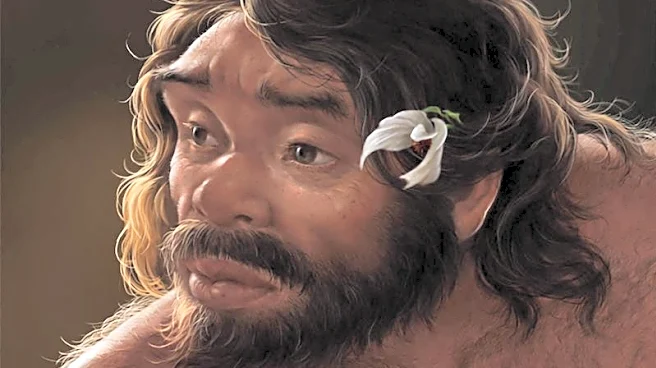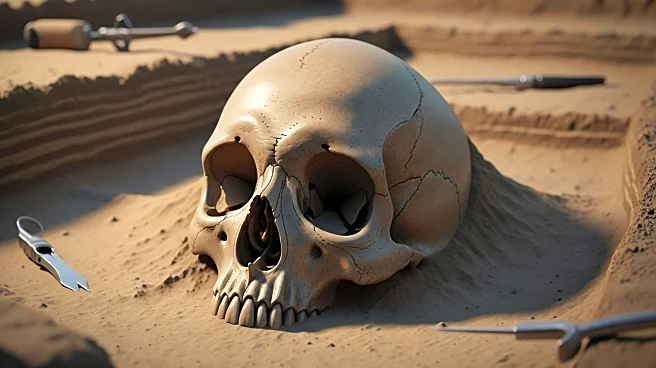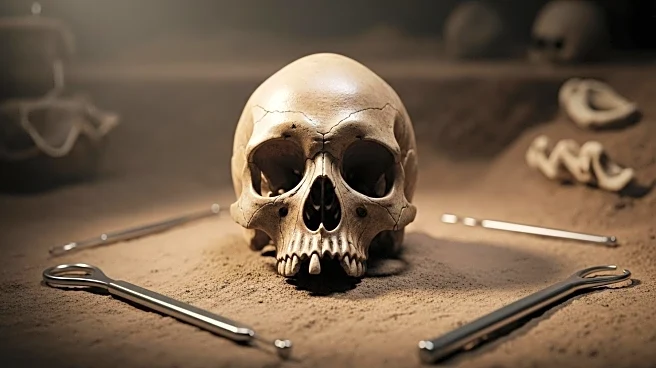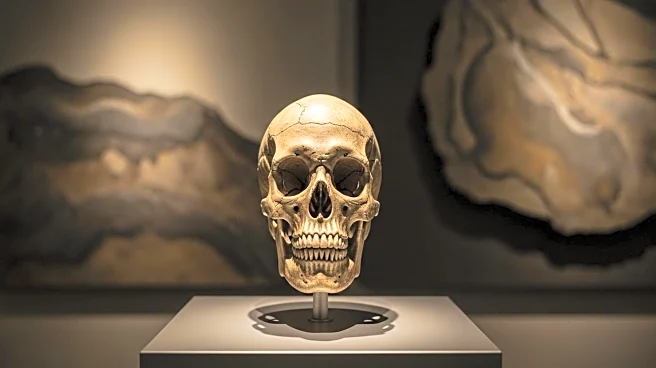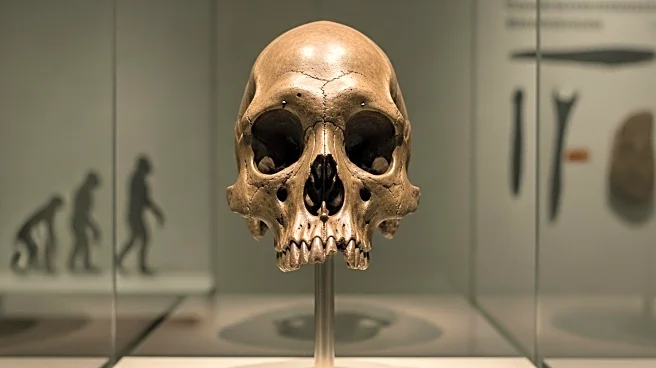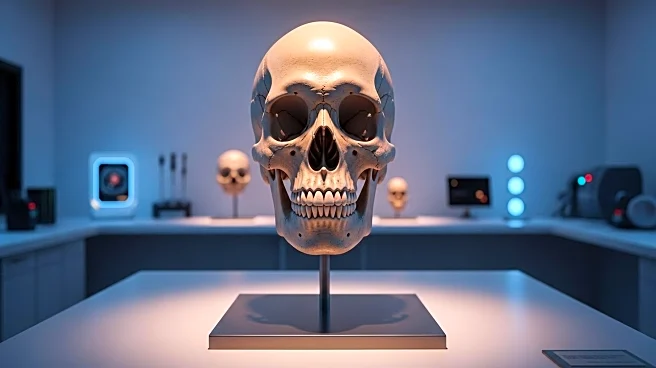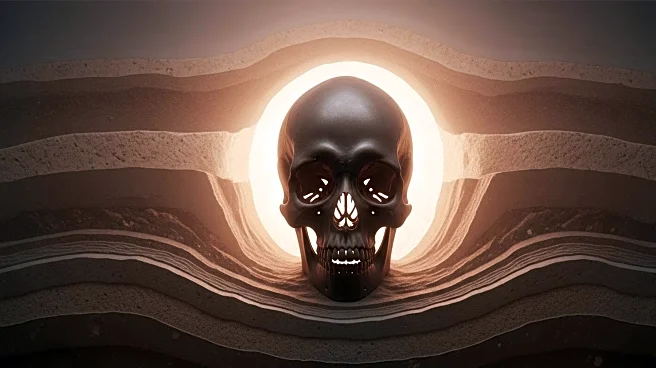What's Happening?
A study published in the journal Science has revealed that a human skull unearthed in China's Hubei Province in 1990 may significantly alter the timeline of human evolution. The fossil, known as Yunxian 2, was initially difficult to analyze due to its crushed and deformed state. However, recent digital reconstruction efforts have determined that the skull is between 940,000 and 1.1 million years old, suggesting that the emergence of the human species occurred 400,000 years earlier than previously believed. This discovery indicates that the evolutionary lineage, including the Denisovans, may have diverged from a common ancestor as far back as 1.32 million years ago, challenging previous estimates of 700,000 to 500,000 years.
Why It's Important?
The findings from the study have significant implications for the understanding of human evolution. By pushing back the timeline for the divergence of Homo sapiens, Homo neanderthalensis, and Denisovans, researchers are prompted to reconsider the complexity and timing of human evolutionary history. This could lead to new insights into how these species interacted and evolved over time. The study also highlights the importance of revisiting and reanalyzing fossil records with advanced technology, which can provide more accurate data and potentially reshape scientific narratives.
What's Next?
Further research and analysis are expected to continue as scientists explore the implications of this discovery. The study may prompt additional investigations into other fossil records to verify and expand upon these findings. Researchers may also focus on understanding the environmental and ecological factors that influenced the evolution and migration of early human species. The scientific community is likely to engage in discussions and debates regarding the revised timeline and its impact on existing theories of human evolution.
Beyond the Headlines
This discovery raises ethical and cultural questions about the interpretation of human history and the narratives that have been constructed around it. As new evidence emerges, it challenges established beliefs and encourages a reevaluation of the stories that define human identity and ancestry. The study underscores the dynamic nature of scientific inquiry and the need for continuous exploration and adaptation of knowledge.


